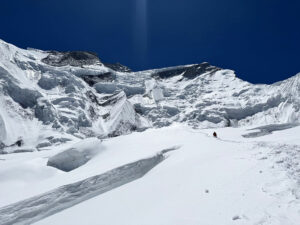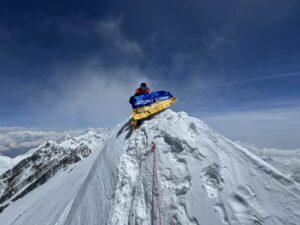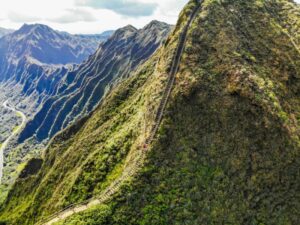As Nirmal Purja does his well-earned round of media interviews, prominent mountaineers have stuck their heads above the parapet to voice their thoughts on the man of the moment.
One of contemporary Himalayan alpinism’s most revered practitioners, Italian climber Simone Moro, has said that although he considers such climbing “high-altitude tourism,” Purja has eliminated “all those who consider themselves heroes for accumulating 8000’ers with good weather, oxygen, fixed ropes and guides.”
The Italian added that such a “clear worldwide reference” may spell the end of “false heroes” and climbers claiming superficial mountain records.
Moro said that from his own vast Himalayan experience, he could “make a list with less than ten names who, with the same means, could repeat this milestone of climbing the 8,000’ers in six months and six days.”
On the emerging debate around Purja’s style, Moro criticized those purists who dismiss his achievement. Instead, he said, mountaineers should focus on repeating Purja’s project without oxygen or fixed ropes, doing the 8,000’ers in winter, tackling unrepeated routes, high altitude-link ups, or hunting out “exclusive and virgin peaks, or pristine regions.”

Simone Moro and Nirmal Purja. Photo: Nirmal Purja
Moro suggested that future mountaineers should not “waste” their career collecting 8,000’ers if they wished to become an “adventurer or explorer”.
“Until yesterday, you could have an alibi [for doing] the normal route on the 14 8,000m peaks.” he said. “Now, at least when it comes to sponsors and media attention, Nirmal Purja has put a virtuous and healthy end to this show.”
Reinhold Messner, the first man to climb all the 8,000’ers, has expressed surprise at how fast Purja completed all 14. Purja demonstrated, he said, “a great capacity for economic management, leadership, logistics organization. And obviously, exceptional physical resistance.”

Reinhold Messner and Purja at Nanga Parbat Base Camp. Photo: Nirmal Purja
Messner agreed that while Purja’s style has “nothing to do with the Jerzy Kukuczka’s,” Purja did not set out to “do better than the great Pole. He has never hidden the use of bottles above 7,500m, or helicopters to accelerate travel [on the mountain itself].”
Laying down the gauntlet to purist mountaineers, Messner wonders when other climbers will “be as fast as he is, and so resistant, without using oxygen cylinders.”
Messner believes that Purja has shown that Nepali climbers, and not just Sherpas (Purja is not ethnically Sherpa, nor was he born at high altitude), can independently lead Himalayan expeditions, much as local guides did in the Alps from the late 19th century onward.
Moro and Messner have sought out a silver lining in Purja’s achievement. Other Himalayan giants have not.
Chris Bonington said, “What he has done is quite extraordinary, but it isn’t mountaineering. Real mountaineering is exploratory –- finding new routes up to big peaks…I don’t see this as a major event.”
Everest new-router Stephen Venables added, “The fact that he used supplementary oxygen detracts from the feat. I know he also used fixed ropes. It isn’t exactly alpinism, as I understand it … It will certainly make it into the Guinness Book of Records, but in the history of mountaineering, it will only be a footnote.’
But the most stinging criticism came from the head of the Indian Mountaineering Foundation, Amit Chowdhuary, who said, “We don’t support this kind of gimmick. If you have 20 people supporting you, of course you can achieve this.”
Such widespread commentary in the mountaineering world is expected when such a project as Purja’s leapfrogs the alpine journals to achieve global attention.






